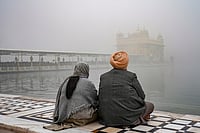Los Angeles, once the embodiment of the American Dream, has a lesser-known tale from its past—a vision of a bicycle freeway, a dream conceived by the millionaire Horace Dobbins in the early 1900s. Today, as the city grapples with traffic congestion and environmental concerns, the story of this forgotten cyclist's dream resurfaces, prompting reflection on urban planning, mobility, and the pursuit of a sustainable future.
In the early 20th century, Horace Dobbins, an affluent entrepreneur and cycling enthusiast, proposed the creation of a dedicated bicycle freeway spanning Los Angeles. This visionary project aimed to provide cyclists with a safe and efficient route through the bustling city, promoting cycling as a viable mode of transportation while reducing congestion and pollution.
The bike path was designed to be a 9-foot-wide wooden track with fences on both sides. It was expected to reach heights of over 50 feet at its tallest point, and it would be so smooth that cyclists could ride all the way downtown without pedalling.
The project was estimated to cost around $187,500 (equivalent to roughly $7 million today). However, during the bike craze, money wasn't a problem for cycling enthusiasts. With plans for a casino along the route and two stations at each end, the cycleway generated a lot of excitement. But not everyone supported it.
Some property owners along the route opposed the path and actively campaigned against it. They believed it would decrease property values and disrupt horse riders' access to the area.

Nevertheless, Dobbins managed to get permission to begin construction. On January 1, 1900, the first 1.3 miles of the path opened to the public, with riders paying a 10-cent fee for a round trip.
The first person to ride on it was Otis Bedell, an inventor, who brought a group of people along. Other vehicles like motorcycles and early cars were also allowed on the path; Dobbins himself drove a car on the cycleway, and it was said that the 500-pound vehicle "didn't even make the structure shake."
Initially, ticket sales were strong. Reporters enthusiastically predicted that the cycleway would become very popular, describing it as "a literal sky route to Los Angeles." There were a few accidents in the following months, but overall, the cycleway was seen as a safer option for riding.
However, despite initial success, the bicycle freeway's fate took a different turn as the automobile gained prominence in the mid-20th century. The rise of cars and the subsequent expansion of road networks led to a decline in cycling infrastructure investment, relegating Dobbins' dream to obscurity.
As highways and freeways dominated urban development, the once-thriving bicycle freeway fell into disrepair and neglect. Sections of the pathway were repurposed or demolished to make way for expanding roadways, erasing traces of its existence from the city's landscape.
Over the next few years, the cycleway began to appear on lists of unpaid taxes. Local residents urged the city to demolish the unused structure, considering it an unsightly nuisance. In December 1907, Dobbins requested permission from the city council to dismantle the bridge, and the California Cycleway Company put the steel structure up for sale.
Subsequently, Dobbins established another transportation company. He used this new venture to acquire the rights to the land where the cycleway was intended to be built. Dobbins proposed constructing a semi-underground electric railway for cars. However, as history tells us, the railway was never completed, and the land rights were eventually sold off.
The concept of a dedicated path for bicycles had its merits, and similar ideas have emerged over the years, such as the greenway project in the L.A. River master plan.
Yet, Dobbins' specific vision of connecting the communities of Pasadena and Los Angeles has already become a reality. The Arroyo Seco Parkway now occupies much of the area where the cycleway was proposed to be built, and Southern Californians have been using this stretch of the 110 Freeway ever since.




























